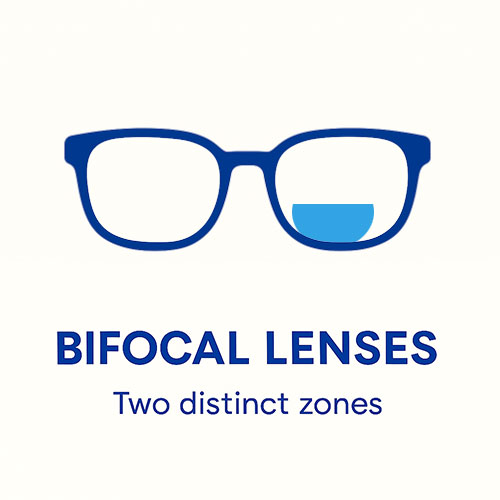Info Centre
-
Refractive conditions
Rx lens options
- Single Vision
- Anti-fatigue
- Bifocal
- Multifocal
- Individualized MF
- MiYOSMART
- Myopia control lenses
- Progressive readers
- Prism
- HRI
- Anti-reflection coating
- Blue protection coating
- Variable tint
- Polarisation
- No Rx required
- No change in Rx
- Spherical contact lenses
- Toric contact lenses
- Multifocal contact lenses
- Daily contact lenses
- Hard RGP lenses
- Scleral lenses
- First time CL wearer
- Contact lens hygiene
- Biofinity® Spherical
- Biofinity® Toric
- Biofinity® toric multifocal
- Biofinity® Multifocal
- Biofinity® Energys™
- Avaira Vitality™
- Avaira Vitality™ Toric
- clariti® 1 day
- clariti® 1 day Toric
- clariti® 1 day Multifocal
- MyDay™ Spherical
- MyDay™ Toric
- MyDay™ Multifocal
- MiSight® 1 day
- NewHue® Colour Contact lenses
- Optive® OMEGA™ UD
- Optive Fusion™ 10ml
- Optive Fusion™ UD
- Optive Plus™ 10ml
- Optive Plus™ UD
- Optive® Gel drops 10ml
- Macular degeneration
- Hypertensive retinopathy
- Diabetic retinopathy
- Glaucoma - Open Angle
- Glaucoma - Closed Angle
- Vitreous floaters
- General Eyecare
- UV Protection
- Safety
- Healthy Eyes
- The power of the second pair
- Screen time & device tips
- Myopia Management
What is Presbyopia?
Presbyopia is an age-related condition in which the eye gradually loses its ability to focus on nearby objects. It typically begins around the age of 40 and results from the natural aging process affecting the lens inside the eye. This can be very frustrating as close-up tasks like reading and using a phone become more difficult without corrective lenses.

Signs and Symptoms
Difficulty Reading Up Close
One of the earliest signs of presbyopia is the need to hold reading material at arm’s length to see it clearly.
Blurry Near Vision
Words on your phone, book, or medicine label may appear blurry, especially in dim light.
Eye Strain and Fatigue
Prolonged near tasks such as reading or computer work can cause tired, strained eyes and discomfort.
Switching Glasses or Removing Them
Some people take off their distance glasses to see up close better—a sign of emerging presbyopia.
Detection and Progression
Presbyopia is diagnosed during a comprehensive eye examination. It progresses gradually over time and typically stabilizes by age 65. Regular checkups ensure that your reading or multifocal prescription stays up to date.
Did you know? Presbyopia affects everyone by the age of 40 — fortunately, it can be treated!
Treatment Options
Presbyopia is commonly corrected using reading glasses, bifocals, progressive lenses, or multifocal contact lenses. In some cases, surgical options such as corneal inlays or lens replacement may be considered. Your optometrist can guide you on the best option based on your lifestyle and vision needs.
What lens design is best for you?
Explore the lens types below to find the best fit for your lifestyle and vision needs.
Living with Presbyopia
Modern solutions can make presbyopia virtually unnoticeable. If you're struggling with near vision, it’s easy to correct. Many patients benefit from multifocal glasses or contact lenses that provide a seamless transition between near and distance vision, allowing for an active, comfortable lifestyle.
Info Centre
-
Refractive conditions
Rx lens options
- Single Vision
- Anti-fatigue
- Bifocal
- Multifocal
- Individualized MF
- MiYOSMART
- Myopia control lenses
- Progressive readers
- Prism
- HRI
- Anti-reflection coating
- Blue protection coating
- Variable tint
- Polarisation
- No Rx required
- No change in Rx
- Spherical contact lenses
- Toric contact lenses
- Multifocal contact lenses
- Daily contact lenses
- Hard RGP lenses
- Scleral lenses
- First time CL wearer
- Contact lens hygiene
- Biofinity® Spherical
- Biofinity® Toric
- Biofinity® toric multifocal
- Biofinity® Multifocal
- Biofinity® Energys™
- Avaira Vitality™
- Avaira Vitality™ Toric
- clariti® 1 day
- clariti® 1 day Toric
- clariti® 1 day Multifocal
- MyDay™ Spherical
- MyDay™ Toric
- MyDay™ Multifocal
- MiSight® 1 day
- NewHue® Colour Contact lenses
- Optive® OMEGA™ UD
- Optive Fusion™ 10ml
- Optive Fusion™ UD
- Optive Plus™ 10ml
- Optive Plus™ UD
- Optive® Gel drops 10ml
- Macular degeneration
- Hypertensive retinopathy
- Diabetic retinopathy
- Glaucoma - Open Angle
- Glaucoma - Closed Angle
- Vitreous floaters
- General Eyecare
- UV Protection
- Safety
- Healthy Eyes
- The power of the second pair
- Screen time & device tips
- Myopia Management





